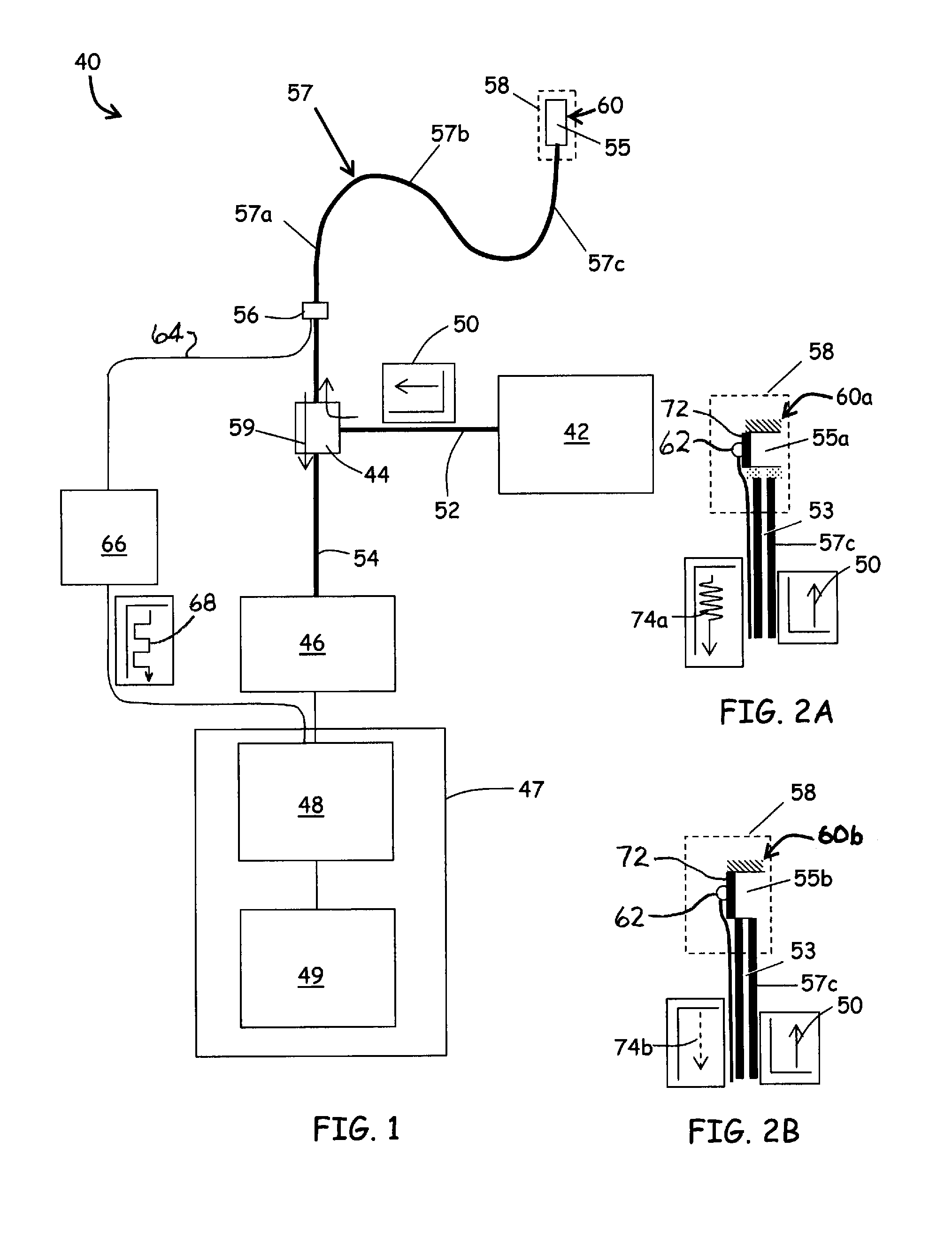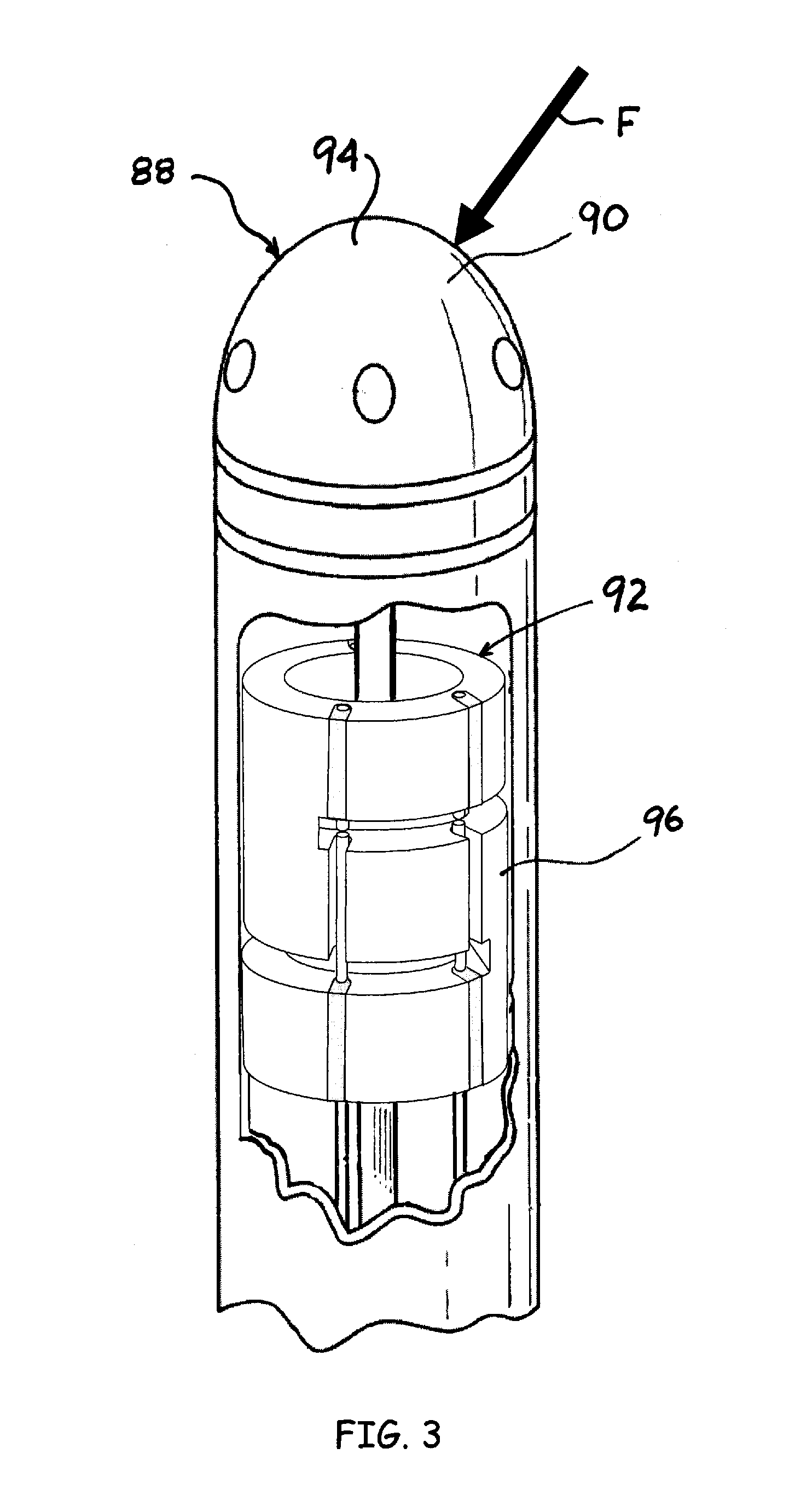Compact force sensor for catheters
- Summary
- Abstract
- Description
- Claims
- Application Information
AI Technical Summary
Benefits of technology
Problems solved by technology
Method used
Image
Examples
Embodiment Construction
[0054]Referring to FIG. 1, an embodiment of a displacement sensing system 40 is depicted in accordance with the invention. The displacement sensing system 40 can comprise an electromagnetic source 42, a coupler 44, a receiver 46, an operator console 47 operatively coupled with a microprocessor 48 and a computer-readable storage device 49. The electromagnetic source 42 outputs a transmitted radiation 50 of electromagnetic radiation that is substantially steady state in nature, such as a laser or a broadband light source. A transmission line 52 such as a fiber optic cable carries the transmitted radiation 50 to the coupler 44, which directs the transmitted radiation 50 through a transmitting / receiving line 54 and through a fiber optic element 53 (FIG. 2A) contained within a flexible, elongate catheter assembly 57 to a fiber optic sensing element 60. The fiber optic element 53 of the catheter assembly 57 and transmitting / receiving line 54 can be coupled through a connector 56 as depict...
PUM
| Property | Measurement | Unit |
|---|---|---|
| Temperature | aaaaa | aaaaa |
| Force | aaaaa | aaaaa |
| Flexibility | aaaaa | aaaaa |
Abstract
Description
Claims
Application Information
 Login to View More
Login to View More - R&D
- Intellectual Property
- Life Sciences
- Materials
- Tech Scout
- Unparalleled Data Quality
- Higher Quality Content
- 60% Fewer Hallucinations
Browse by: Latest US Patents, China's latest patents, Technical Efficacy Thesaurus, Application Domain, Technology Topic, Popular Technical Reports.
© 2025 PatSnap. All rights reserved.Legal|Privacy policy|Modern Slavery Act Transparency Statement|Sitemap|About US| Contact US: help@patsnap.com



